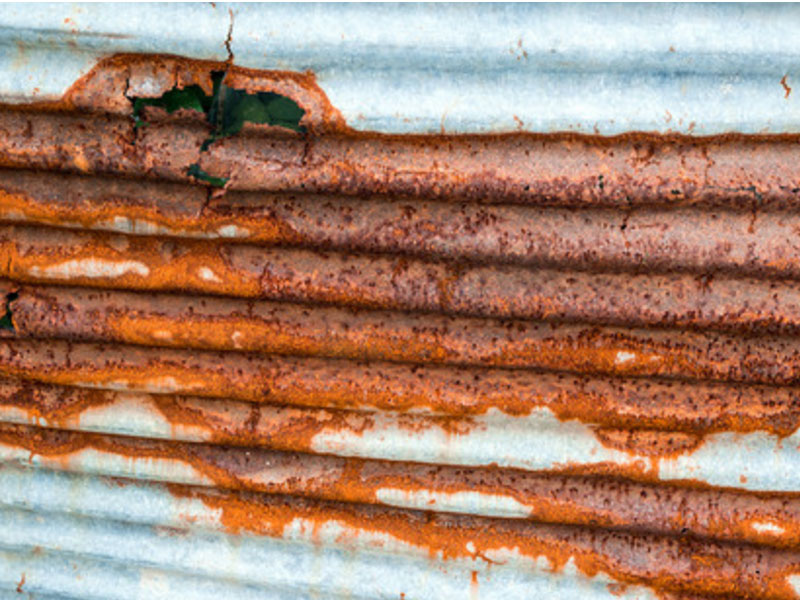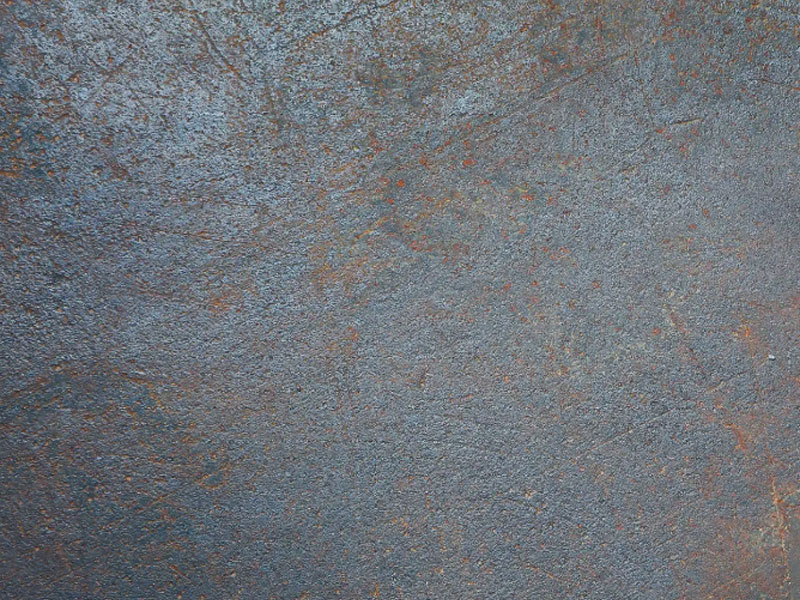The appearance of black rust on the surface of galvanized steel is an indication that the underlying steel has corroded. This problem occurs during storage and use, usually due to overstorage, poor passivation of the oil coating, or environmental corrosion that exceeds the corrosion resistance of the zinc coating. Unlike white and red rust on galvanized steel surfaces, when black rust appears it indicates severe corrosion of the steel.


How to Deal with Black Rust on Galvanized Steel?
When we find black rust on galvanized steel material, the primary goal is to stop the corrosion process and restore protection, choosing different treatments depending on the extent of the black rust.
Assessing the Extent of Corrosion
- Localized black rust/pitting: Black rust is only present in small areas (e.g. cut edges, weld points, scratches) and the surrounding galvanized coating is intact.
- Extensive black rust/severe corrosion: Black rust covers a large area, accompanied by blistering and peeling of the galvanized coating, and the underlying steel may have been significantly thinned or even perforated.
Treatment steps
Protection
- Wear goggles, a dust mask, chemical resistant gloves and ensure that the work area is well ventilated.
Thoroughly clean the surface
- Remove loose rust, flaking galvanizing, dirt and old coatings with a non-metallic stiff-bristle brush or scraper.
- Wash the surface with warm water and neutral detergent to remove grease, salt and other soluble contaminants. Rinse thoroughly and dry completely.
Rust Removal
1. Mild to moderate black rust: Mechanical descaling, chemical descaling, weak acid solution (not recommended), etc. can be chosen.
Mechanical descaling
- Hand Tools: Use stainless steel or brass wire brushes, descaling scrapers, and sandpaper (80-120 grit) to carefully sand the corroded area until a solid metal substrate is exposed. Be sure to sand at least 1-2 cm beyond the edge of the corroded area onto the intact galvanized layer.
- POWER TOOLS: Use an angle grinder with a wire brush wheel (stainless steel/bronze wire), louvers or sanding discs for better efficiency. Again sanding to a solid substrate and widening is required.
Chemical Rust Removal
Specialized Rust Converter: Select a rust converter suitable for galvanized steel. Apply it to the rusted area and leave it on long enough to follow the instructions. It will react with the rust to form a stable black or gray-black phosphate passivation film. It must then be thoroughly rinsed off and dried.
2. Heavy Black Rust / Extensive Rust: Mechanical Removal or Alternatively, Replacement of Rusted Section with New Steel
- The rusted section must be thoroughly removed until an intact, solid steel substrate is exposed. Deeper rust pits may need to be sanded out.
- If corrosion has caused significant loss of structural strength or perforation, localized repair or replacement of the part may be required.
- Sandblasting: An effective way to remove black rust from large areas or complex shapes of steel, using suitable abrasives (e.g., steel grit, steel shot, non-metallic abrasives) to remove all rust, old coatings, and contaminants and expose the metal to its natural color.
Surface Preparation
- Clean the surface: After removing rust, wipe the treated area and surrounding area with a clean cloth dampened with a solvent (e.g., special metal cleaner, isopropyl alcohol) to thoroughly remove sanding dust, oils, chemical residues, etc.
- Edge feathering: For sanded areas, sand the edges of the surrounding intact galvanized layer to a smooth transition bevel (feathering) to facilitate adhesion of subsequent coatings.
- Restoration Protection: Zinc rich paint or other compatible coating to cover all sanded areas and feathered edges.
Inspection and Maintenance
After the restoration is complete, periodically inspect the restored area for the appearance of new rust. Keep the component clean and well drained.
Galvanized Steel Black Rust Causes?
The main reason for black rust on galvanized steel is that the protective effect of the zinc layer is destroyed or consumed. Black rust is a product of the corrosion of the galvanized layer that develops at a later stage. Factors that can be investigated: the service life of the zinc layer reaches its limit, the zinc layer is too thin for the application environment, problems with the galvanizing technology.
Depletion of the Galvanized Coating
- Zinc sacrifices itself preferentially in a corrosive environment (sacrificial anodic protection) to protect the underlying steel. Over time, the galvanized layer is gradually depleted and becomes thinner. When the galvanized layer is completely depleted, or when the zinc from cut edges, welds, etc. is rapidly depleted, exposing the underlying steel, the steel will begin to rust with a reddish-brown color (rust).
- Formation of Black Rust: Rust is further oxidized and transformed to form a more complex black oxide, which is what we see as “black rust”.
Environmental Factors Accelerate Corrosion
- Humidity/Condensation: Prolonged exposure to humidity or repeated condensation can accelerate zinc depletion and lead to rust.
- High Salt Environments: Coastal areas (salt spray) or icy road salt environments can greatly accelerate corrosion of galvanized steel.
- Industrial Pollution/Acid Rain: Acidic pollutants such as sulfur dioxide, nitrogen oxides, and other acidic pollutants can combine with moisture to form corrosive acids that cause steel to rust.
- High Temperature and Humidity: Tropical or confined, unventilated environments.
- Contact with dissimilar metals: Galvanized steel can form galvanic corrosion when it is in direct contact with metals with higher potentials, such as copper, brass and stainless steel, and in the presence of electrolytes (such as rain).
- Accumulation of dirt/dirt: Long-term accumulation of dust, dirt, bird droppings, leaves, etc. on the surface, which absorbs and retains moisture, forming a localized corrosion cell that accelerates corrosion of the galvanized coating and steel.
Initial galvanizing Quality or Damage
- Too thin a coating: Does not meet the requirements of the environment in which it will be used.
- Uneven/missing plating: Defective areas created during production directly expose the steel.
- Mechanical damage during transportation, installation or use: Scratches, impacts, welding, cutting (etc., destroying the integrity of the zinc layer.
How to Avoid Black Rust on Galvanized Steel?
The corrosion resistance of galvanized steel is mainly determined by the thickness of the zinc layer. The core of rust prevention is to protect the galvanized layer from premature depletion or destruction, which can be achieved by choosing the right thickness of the coating, strictly controlling the galvanizing production process, and regular maintenance to extend the service life of the steel.
- Strictly according to the corrosivity of the environment (C1-C5 grade) to select the sufficient thickness of galvanized coating in accordance with the standards (such as ISO 1461, ASTM A123).
- Standardize handling, storage, processing and installation to avoid surface scratches caused by dragging, collision, cutting edges and thus damage to the integrity of the zinc coating.
- Avoid direct contact with dissimilar metals.
- Regularly clean the surface and keep the surface of galvanized steel materials dry and clean.
- Increase the thickness of the zinc layer in extreme environments or increase the corrosion resistance by painting.
The prevention of black rust on galvanized steel is more important than the treatment, because once black rust appears, it means that the steel has been severely corroded. If you are looking for anti-corrosion metal materials, welcome to contact Wanzhi Group, we can provide you with professional metal solutions.
